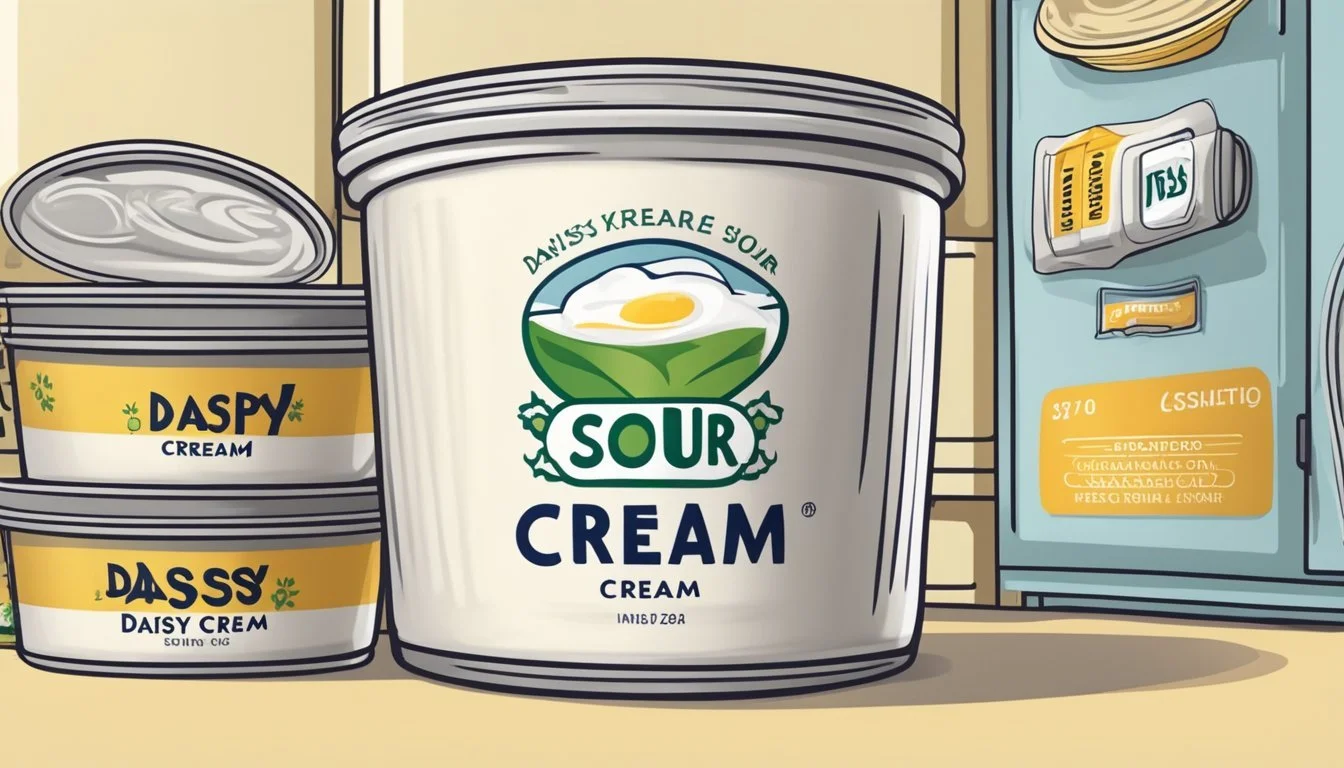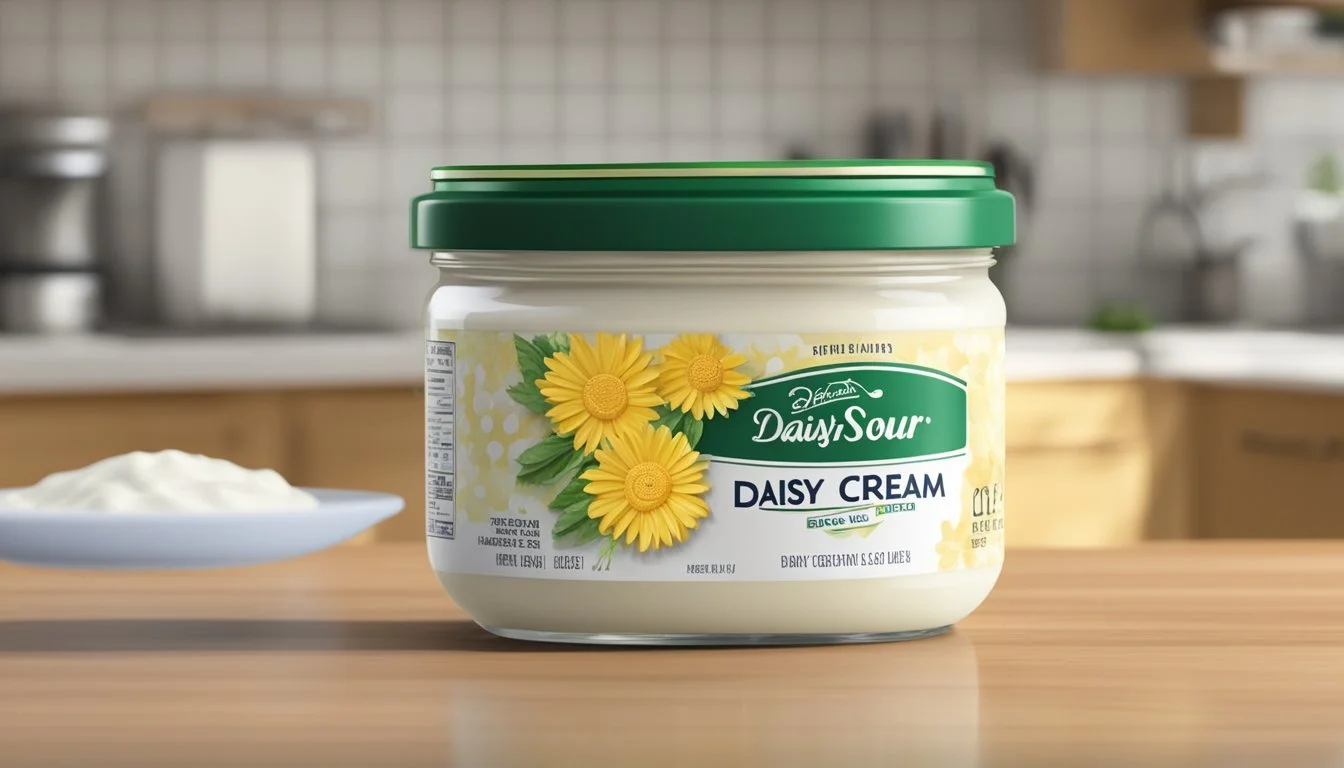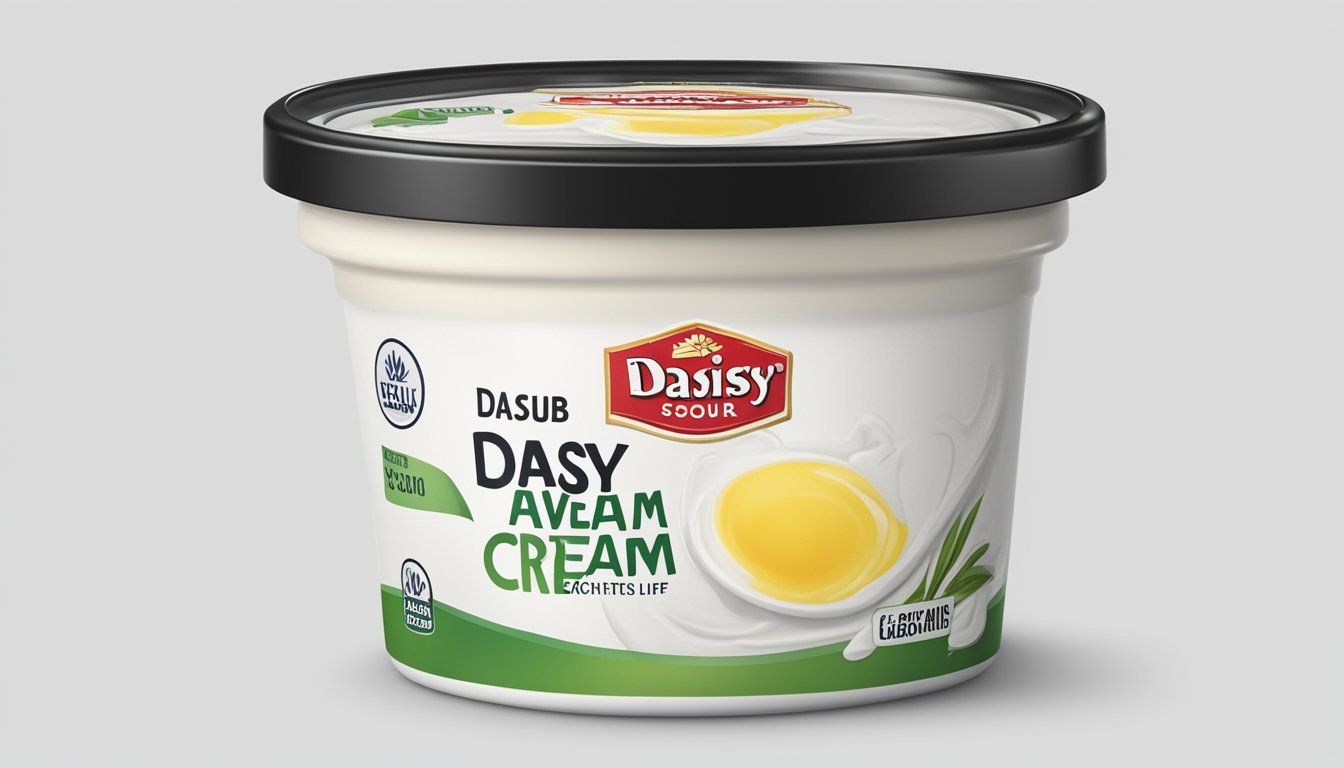How Long Does Daisy Sour Cream Last?
Shelf Life and Storage Tips
When it comes to refrigerated staples like Daisy Sour Cream (how long does cream last?), understanding the product's shelf life is key to ensuring both quality and food safety. Typically, unopened containers of Daisy Sour Cream can last for 2 to 3 months when stored correctly in a refrigerator at or below 40°F (4°C). Refrigeration at a consistent temperature is vital for maintaining the freshness and safety of the sour cream.
Once opened, the sour cream's quality can generally be maintained for about two weeks if stored properly in the fridge. Consumers can assess the freshness of an opened container of Daisy Sour Cream by checking for any off-putting smell, discoloration, or signs of mold. Such signs indicate spoilage, and the sour cream should then be discarded to avoid any potential health risks. The best-before dates printed on packaging can serve as a guide, but it's also important to use sensory cues to determine if the sour cream is still good to consume.
Understanding Daisy Sour Cream
Daisy Sour Cream is a dairy product that is created by fermenting regular cream with lactic acid bacteria. The fermentation process thickens the cream and gives it a tangy flavor characteristic of sour cream. As a cultured cream product, it contains beneficial bacteria that are significant for the souring process.
The nutritional components of Daisy Sour Cream include:
Protein: vital for building and repairing tissues
Sugars: lactose present in the cream that bacteria ferment
Fat: full-fat content is typical for rich and creamy texture
Daisy brand is recognized for producing sour cream that focuses on a simple ingredient list, often appreciated for not containing additives or preservatives commonly found in other brands. The souring process of sour cream, due to the presence of lactic acid bacteria, not only imparts the distinct sour flavor but also enhances its preservation. However, once opened, the exposure to external factors affects sour cream’s freshness and longevity.
When it comes to storage, Daisy Sour Cream should be kept refrigerated at a consistent temperature of 40°F (4°C) or lower to maintain its shelf life. Packaging plays a role in its preservation, with unopened containers boasting a longer shelf life compared to those that are opened:
State of Container Expected Shelf Life Unopened Up to 2 to 3 months Opened Approximately 1 to 2 weeks
Sour cream’s texture and consistency are direct outcomes of the fermentation process, where water from the cream is trapped, creating a semi-solid state and sometimes separating a liquid called whey. Consumers can enjoy the creamy and smooth texture of Daisy Sour Cream as part of various recipes or as a topping, considering its shelf life for optimal quality and taste.
Proper Storage Practices
Proper storage of Daisy Sour Cream extends its shelf life while maintaining quality. By adhering to specific refrigeration essentials, utilizing the best containers, and understanding the implications of freezing, one ensures optimal freshness.
Refrigeration Essentials
Daisy Sour Cream must be kept refrigerated at all times to preserve its quality. The ideal temperature for storing sour cream should remain consistent at 40°F (4°C) or lower. It's important to place sour cream in the main body of the refrigerator where temperature fluctuations are minimized.
Best Containers for Storage
Retaining sour cream in its original packaging is usually suitable as long as the lid is sealed tightly after each use. However, if the original container is compromised or if the sour cream has been transferred, an airtight container is imperative to prevent contamination and extend shelf life. After use, one can press a piece of plastic wrap directly onto the surface of the sour cream before resealing to provide an extra barrier against air.
Freezing Sour Cream
While freezing sour cream can extend its usability, it's important to note that it may alter the texture, making it more suitable for cooked dishes than for fresh use. For freezing, portioning the sour cream into airtight containers or heavy-duty freezer bags is recommended. When ready to use, thawing it in the refrigerator and stirring well can help restore some of the consistency.
Shelf Life and Expiration
Daisy Sour Cream's longevity varies between unopened and opened states, and understanding the expiration labels is key to ensuring quality and safety. It's essential to note the differences between sell-by, use-by, and best-before dates to make informed decisions about consumption.
Understanding Expiration Labels
Sell-by date: This is the date by which the store should sell the product to ensure it's at its best quality. Daisy Sour Cream typically has a shelf life of up to three weeks post the sell-by date when unopened and refrigerated properly.
Use-by or Best before date: Often seen as a deadline for when a product should be used, this label is set by the manufacturer and indicates the last date recommended for the use of the product while at peak quality. The USDA confirms that pasteurized dairy products like sour cream can be safe beyond these dates if stored correctly.
Evaluating Freshness Post-Expiration
After the expiration date, one should evaluate the freshness of Daisy Sour Cream carefully:
Visual and olfactory checks: Inspect for any changes in color, texture, or smell. Sour cream should be a consistent white color and have a fresh, mildly tangy scent.
Taste test: If it passes the visual and smell tests, a small taste can help determine if it has gone bad, but this should be done cautiously.
If stored at 40°F (4°C) or lower, unopened Daisy Sour Cream can outlast the sell-by date by 2-3 months, but once opened, it should be used within 1-2 weeks for optimal quality. Always ensure the product is stored in the main part of the refrigerator, away from the door, to maintain a consistent temperature and maximize shelf life.
Identifying Spoilage
When Daisy Sour Cream is spoiled, it exhibits noticeable changes that should not be ignored to ensure food safety.
Visual and Textural Changes
A clear sign of spoilage in sour cream is visual and textural alteration. One should look for:
Separation: Some separation of whey (the watery part) is normal, but excessive separation indicates spoilage.
Discoloration: Any discoloration, such as yellowing or pink spots, is a warning sign.
Texture: Sour cream should be creamy; if it appears lumpy or unusually thick, it may be spoiled.
Smell and Taste Assessment
The sour cream's aroma and flavor are also indicators of its condition:
Off smell: A sour or putrid odor is a definitive sign of spoilage.
Taste: If the sour cream tastes different from its characteristically tangy flavor, it should not be consumed. Do not taste if the product shows other signs of spoilage.
Handling and Usage Tips
To maximize the freshness and quality of Daisy Sour Cream, handling and usage tips should be meticulously adhered to. By utilizing clean utensils every time and following specific service suggestions, consumers can enjoy Daisy Sour Cream in various dishes, from savory tacos to sweet desserts.
Serving Suggestions
When using Daisy Sour Cream, it's essential to serve it at optimal temperatures. For savory dishes such as tacos, baked potatoes, and dips, Daisy Sour Cream should blend smoothly with the other ingredients. In sweet applications, like desserts and certain sauces or soups, gently fold the sour cream to maintain its creamy texture. Attempting to preserve the sour cream's freshness and consistency is key during preparation and serving.
For savory dishes: Ensure Daisy Sour Cream is thoroughly blended with the other savory components.
For sweet recipes: Fold in Daisy Sour Cream delicately to avoid curdling and to maintain a smooth consistency.
Preventing Contamination
To prevent bacterial contamination and to safeguard the product's freshness, always use clean utensils when scooping Daisy Sour Cream. Adherence to these simple guidelines can significantly extend the life of sour cream once opened.
Always use a clean spoon or spatula each time Daisy Sour Cream is used.
Avoid double-dipping as it introduces bacteria and can lead to faster spoilage.
By following these handling and usage tips, the consumer can best ensure that they are using Daisy Sour Cream in a manner that maintains its quality and freshness.
Safety and Health Considerations
When it comes to dairy products such as Daisy Sour Cream, safety is paramount to avoid foodborne illnesses. Unopened sour cream can last for about 2 to 3 months in the fridge if it is kept at a consistent temperature of 40°F or lower. Once opened, it's recommended to use sour cream within two to three weeks as suggested by The USDA and The Food Marketing Institute.
Consumers should be aware of:
Food Poisoning: Eating expired sour cream can lead to symptoms like nausea, vomiting, and diarrhea. It's crucial to heed the use-by dates and storage instructions to minimize the risks.
Mold and Contamination: Examination for mold is essential. Presence of mold equates to spoilage and thus, the product should be discarded immediately to prevent health risks.
Bacteria Growth: The moist environment of sour cream is a breeding ground for bacteria if not stored properly. Improper refrigeration accelerates this growth and may lead to illness.
To ensure consumption safety:
Smell: Always trust one's sense of smell to detect sourness that's indicative of spoilage.
Texture: A change in texture could signal contamination.
If there is any doubt about the quality of Daisy Sour Cream, it is safer to discard it rather than risk illness. Consuming the product past its expiration date, especially if the consistency, smell, or color has changed, is not advised. Keeping these considerations in mind will help avoid unnecessary waste and maintain food safety.
Environmental and Economic Factors
Proper storage of Daisy Sour Cream significantly impacts both environmental and economic aspects. From an environmental standpoint, minimizing waste is crucial. When sour cream is discarded due to spoilage, it contributes to the growing issue of food waste.
To reduce waste, consumers need to be aware of how storage conditions influence sour cream's longevity. Exposure to air can degrade the quality more quickly, leading to sour cream being discarded prematurely. Once opened, sour cream should be sealed tightly to limit air contact, which can induce spoilage through the growth of mold and bacteria.
Economically, reducing waste of sour cream can lead to household cost savings. Keeping sour cream well-sealed and refrigerated extends its shelf life, decreasing the frequency of purchasing replacements. Here's a quick reference for Daisy Sour Cream after opening:
Type Refrigerator Shelf Life Full-fat 2-3 weeks Reduced-fat 1-2 weeks Fat-free 1 week
Appearance and odors are indicators of spoilage. If sour cream has an off smell, changed appearance, or mold is visible, it should be discarded. These signs pose health risks and the product is no longer fit for consumption.
Retailers also feel the economic impact. Products that reach the sale point in poor condition due to improper storage are less likely to be sold. This not only affects revenue but can also harm the brand's reputation if spoiled products reach consumers.
In conclusion, intelligent management of sour cream storage can have positive impacts environmentally, by reducing waste, and economically, by ensuring the product's best use by the consumer and retention of sales by retailers.







